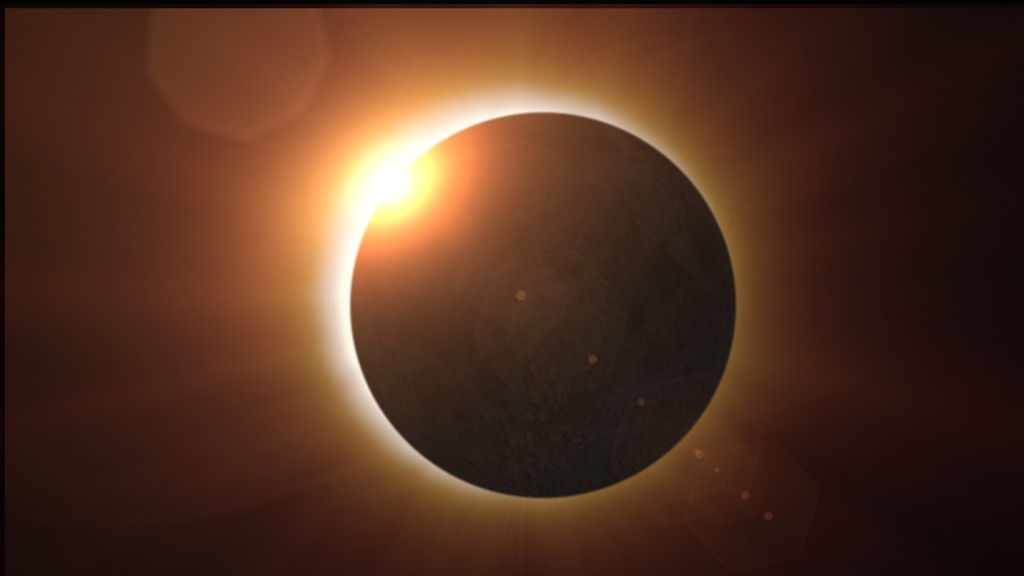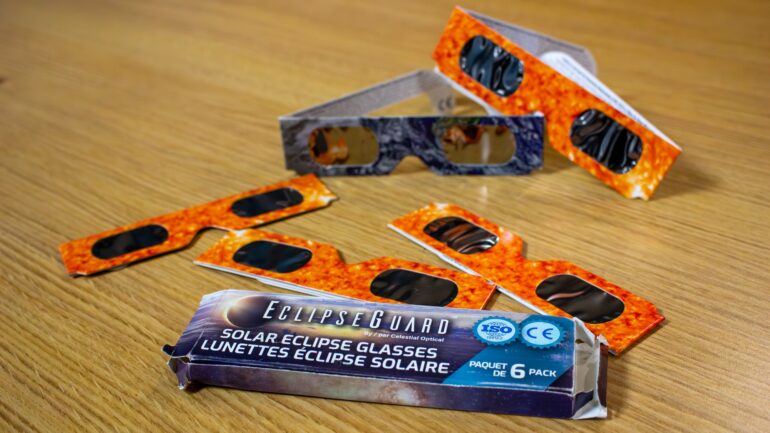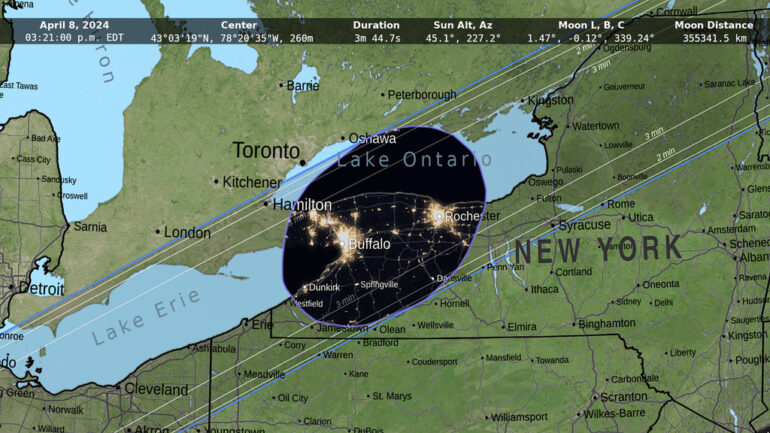A week from today, on April 8, the largest solar eclipse in nearly a century will pass over Toronto.
Solar eclipses occur when the moon passes directly between the Earth and the sun, casting a shadow as the moon blocks out the sun and temporarily turns day into night.
In the path of totality, the moon fully covers the sun. In partial eclipses, the moon covers only part of the sun, creating a crescent of light similar to lunar cycles.The partial eclipse is to begin at 2:04 p.m., peak at 3:19 p.m. and end at 4:31 p.m.
At its peak in Toronto, the moon will obscure 99.93 per cent of the Sun.
Humber College students at its Lakeshore Campus who walk to the tip of Colonel Samuel Smith Park, out into Lake Ontario, will gain an extra few decimals with 99.95 per cent obscuration — how much of the sun is covered by the moon. Meanwhile, students at the North Campus will experience 99.62 obscuration. Close to a total eclipse but those last decimal points make a big difference.
Even that tiny sliver of remaining sunlight is dangerous. Looking at the eclipse without proper eye protection can cause solar retinopathy, damaging your retina, the tissue at the back of your eye. Your retinas do not have pain sensors to signal damage from staring at the sun.
To safely view the eclipse, it is necessary to get safe solar viewing glasses that comply with the ISO 12312-2 international standard. These glasses are thousands of times darker than sunglasses.
Other options include indirect viewing such as through pinhole projectors. Binoculars, camera lenses and telescopes, not equipped with a special-use solar filter, will all cause immediate eye damage.
Just as the sun can damage your eyes, it can also damage your camera. This is true for phone cameras but even more for cameras using telephoto lenses. It is essential to use filters to avoid permanently damaging your devices.
In a total eclipse, for that brief window of total coverage, observers can remove their eye protection. This allows them to see the solar corona — the outer atmosphere of gases, normally drowned out by the brightness of the sun. Toronto will not experience a total eclipse of the sun. It will not be safe to remove your eye protection.
The sun goes through periods of increasing and decreasing activity. During the last eclipse in 2017, the sun was at solar minimum. However this time, it is near solar maximum. That means viewers in the path of totality will likely witness solar loops, streamers and possibly even a coronal mass ejection, a large expulsion of plasma and magnetic field from the sun’s corona.
Toronto will miss out on the total eclipse, but neighbouring cities will get the full experience. Burlington, Hamilton, Kingston, Montreal and Niagara Falls all fall on the path of totality.
The Niagara region has declared a state of emergency in anticipation of the large influx of visitors.
For viewers in Toronto, this is a once-in-a-lifetime eclipse. In 2017, the partial eclipse reached a maximum of 70 per cent obscured. The last total eclipse in Ontario was in 1979 and the last one in Toronto was nearly a century ago, in 1925. In 2099 there is an eclipse that will again reach 99 per cent obscured. However, the next total eclipse in Toronto won’t be until 2144.



